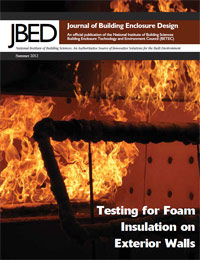| Download the Flyer | ||||||||
 |
Achieving Zero Energy Buildings: |
|||||||
The Building Enclosure Council–Charleston and the US Green Building Council– SC Chapter Lowcountry Branch present...
17 January 2013 6:00 PM– 7:30 PM The Charleston County Public Library, 68 Calhoun St, Charleston, SC 29401 (map) Continuing Education AIA: 1.5 LU/HSW/SD SC Building Council: 1.5 hrs GBCI: Pending Certificates by Request FREE |
SummaryOver the last few years there has been much talk about zero-energy buildings. The 2012 IECC has been tightened and bring us closer to zero-energy buildings, but how much can we reduce the environmental footprint of buildings? The discussion will focus on the potential to create lower-energy buildings, what technologies and techniques can be used, and current areas of research. Our speaker will also address how design professionals, owners, developers, and contractors can effectively make better decisions to create buildings with lower energy footprints and what resources are currently available to help this process. Outline
|
|||||||


 Paul A. Torcellini, Ph.D., P.E.
Paul A. Torcellini, Ph.D., P.E.

